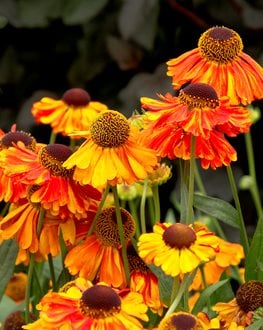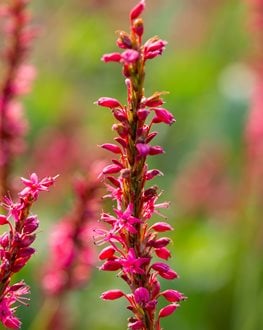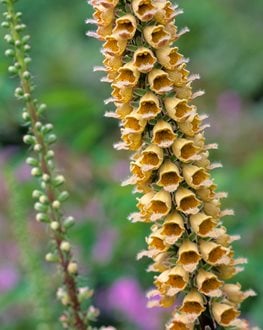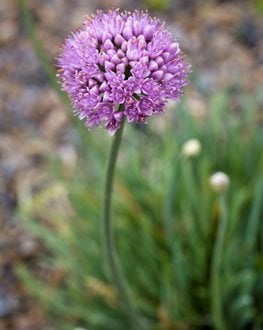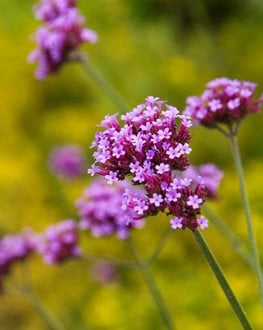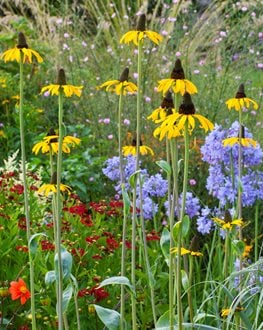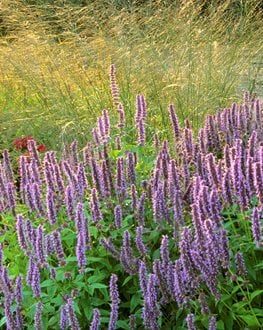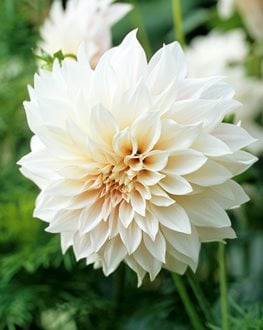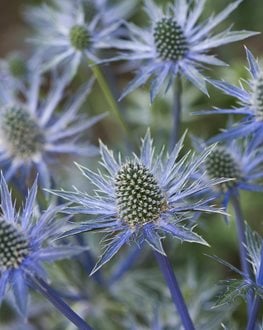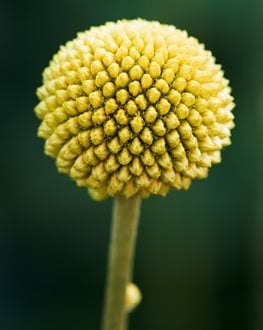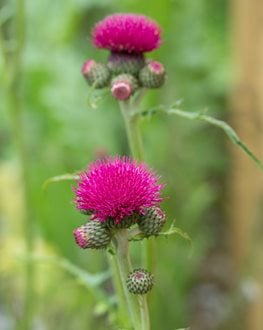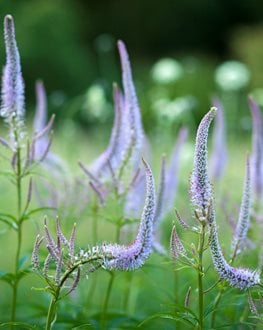Summer Perennials - 12 Plants for a Colorful Summer Garden
Nick McCullough shares a dozen richly colored plants that will carry your late-season summer gardenAfter years of designing gardens, Nick McCullough, of McCullough’s Landscape & Nursery, has learned the hard way what plants he can rely on—not just to survive, but to actually star in the midsummer garden.
After the big glorious blast of spring bloom is over, there’s usually a rough stretch for the garden. When temperatures and humidity start climbing, he counts on these 12 tried-and-true, mid- to late-season perennials and biennials that are perfectly at home in a border or garden bed.
1. SNEEZEWEED (Helenium 'Mardi Gras')
This perfectly named summer flower does just as it implies: it adds a party to the garden. It produces a profusion of 2-inch colorful blooms from August to early October, with bright orange petals splashed with yellow. This long-blooming, hot-colored perennial will liven up the dog days of summer. I often use it as an accent to drifts of purple-blue flowers like giant hyssop 'Blue Fortune' (Agastache), and the fine texture of a bluegreen grass like little bluestem 'The Blues' (Schizachyrium scoparium).
Bloom color: Yellow to red rays
Bloom time: August-October
Height/Spread: 24-36”/12-18”
Zones: 4-9
2. FIRETAIL FLEECE (Persicaria amplexicaulis 'Firetail')
For a pop of hot color that starts in June and lasts until the first frost, look no further than Persicaria ‘Firetail’. While not aggressive, this sturdy perennial likes a bit of room and will drift and weave amongst a border planting. The bottle-brush-like crimson flowers swaying above clumps of dark green lanceolate foliage add a textural dimension to a pond’s edge or in a prairie-style planting. It pairs wonderfully with contrasting-shaped flowers like purple coneflower (Echinacea purpurea), gray-head coneflower (Ratibida pinnata), or a finely textured grass like pink muhly (Muhlenbergia capillaris).
Bloom color: Crimson
Bloom time: June-October
Height/Spread: 36-48”/36-48”
Zones: 4-8
3. RUSTY FOXGLOVE (Digitalis ferruginea)
This elegant foxglove, redolent with tall, golden spires of tubular flowers, is often used as a free-seeding biennial in prairie style gardens. It makes a big statement in early summer by gracefully towering over its neighbors. Pair it with native prairie dropseed (Sporobolus heterolepis), bluestar (Amsonia tabernaemontana), and Siberian iris (Iris sibirica). As an added bonus, this summer flower is as beautiful in a vase as it is in the garden. It performs best in part shade and in soil that does not go bone dry.
Bloom color: Creamy yellow
Bloom time: May-June
Height/Spread: 36-54”/12-18”
Zones: 4-10
4. GERMAN GARLIC (Allium senescens ssp. montanum var. glaucum)
This compact perennial sports a profusion (up to 30 per plant) of globe-shaped lavender flower heads perched on slender stems. Unfazed by intense heat, it adds a welcome splash of color to the front of the summer border. The narrow, slightly twisted, blue-green leaf blades are also attractive, creating swirling evergreen mounds. Bees, butterflies, and hummingbirds adore the blossoms. As with all Allium, this plant has a faint onion scent, so it’s deer resistant. It will thrive for years if planted in an area with good drainage and full sun.
Bloom color: Lavender-pink
Bloom time: July to early fall
Height/Spread: 6-12”/12”
Zones: 4-8
5. TALL VERBENA (Verbena bonariensis)
This biennial/perennial has slender stems topped with tufts of pink-purple flowers. It’s a favorite of all nectar feeders and the seeds attract small birds (especially goldfinches), so plant it where you can observe it during the summer. Caution: It has been known to seed around a bit, and in warmer zones it can be invasive.
Bloom color: Rosy lavender
Bloom time: June to frost
Height/Spread: 36-48”/8-12”
Zones: 7-10
6. LARGE CONEFLOWER (Rudbeckia maxima)
Not your grandmother’s black-eyed Susan, this robust American prairie native is a tour de force in the summer garden. In June and July, the hefty flowers emerge on stems that are nearly 5 to 6 feet, with drooping rays of yellow petals surrounding the very attractive dark brown center cones. The large flower is a favorite of many fauna, such as monarch and swallowtail butterflies, and hummingbirds. Though the flowers are often the focal point, the foliage is nothing to overlook with its powdery blue, tobacco-like leaves.
Bloom color: Yellow
Bloom time: August-October
Height/Spread: 54-72”/36-48”
Zones: 4-9
7. GIANT HYSSOP (Agastache 'Blue Fortune')
Topped with tight bottlebrushes of lavender-blue flowers, giant hyssop is a showstopper. The numerous tiny flowers are packed with intoxicating quantities of nectar and pollen, so this plant is perfect for any gardener who enjoys attracting bees, butterflies, and hummingbirds. Pair it with dark-leaved plants like Penstemon 'Dark Towers' and Eupatorium 'Chocolate' because their wine-colored foliage complements the blue flowers so well. This easy-to-grow perennial is also both heat and drought tolerant. Giant hyssop blooms from spring through summer. The leaves have a pleasant licorice scent and are deer resistant.
Bloom color: Lavender-blue
Bloom time: June-September
Height/Spread: 30-36"/18-24"
Zones: 5-9
8. DAHLIA (Dahlia 'Café au Lait')
'Café au Lait' is a must-have for any dahlia lover. This highly sought after cultivar produces dinner-plate-sized flowers from June until frost. It ranges in color from creamy beige to peachy blush and has become a favorite of florists in recent years. Grow for cut flowers and combine it in a bouquet with 'Limelight' hydrangea (panicle hydrangea) and black hollyhock (Alcea rosea 'Nigra'. You can grow it as an annual in cooler zones, or dig tubers in the fall and store for replanting the following spring.
Bloom color: Creamy beige
Bloom time: June-September
Height/Spread: 36-48"/18-30"
Zones: 4-8
9. SEA HOLLY (Eryngium 'Sapphire Blue')
This sea holly cultivar sparkles in the garden, with starry, teasel-like flower heads in a brilliant steely blue color that continues on the stems and foliage. Like ice crystals, the prickly blooms and leaves project from stiff, branching stalks above spiny basal rosettes. Sea holly is ideal as an architectural focal point and cool complement to hot-colored flowers like Helenium 'Mardi Gras' and Coreopsis. While some sea hollies reseed too vigorously, this one is sterile so is not invasive. They're very tolerant of poor sites, so plant sea holly in well-drained soil, even sandy, in full sun. It will flop over if planted in a too-rich or too-shady location.
Bloom color: Steely blue
Bloom time: June-August
Height/Spread: 24-30”/18-24”
Zones: 5-8
10. BILLY BUTTONS (Craspedia globosa)
Also called drumsticks, this native of Australia and New Zealand can be perennial on the West Coast but is generally replanted every year as an annual in other places. Its low tufts of silvery foliage, a foot tall or so, sport numerous mustard-yellow balls of flowers bobbing on thin, 2-foot stalks throughout the summer. A truly tough plant, Billy Buttons tolerates poor, heavy soil and drought. The flowers are beloved by florists and work well in both fresh and dried arrangements. They make a playful, kinetic addition when tucked into a border.
Bloom color: Yellow
Bloom time: June-September
Height/Spread: Foliage 12-18”/6-10”; Bloom 24”
Zones: 3-10
11. GIANT THISTLE (Cirsium rivulare 'Atropurpureum')
Related to the artichoke and cardoon, and not invasive like its cousin the bull thistle, this highly coveted thistle is absolutely stunning. In July and August, its deep crimson flowers hover above dramatic, deeply cut, bluish-green foliage on robust, upright stems. Equally at home along the water's edge or in a prairie-style perennial border, this giant thistle adds an air of whimsy to a garden in need of summer color, and also makes a wonderful cut flower. Pair it with a perennial that has smaller, rounded foliage, like blue false indigo (Baptisia australis) for textural contrast. This is a must-have for all the plant nerds out there.
Bloom color: Dark crimson
Bloom time: July-September
Height/Spread: 36-48”/18-24”
Zones: 5-9
12. CULVER’S ROOT (Veronicastrum virginicum 'Fascination')
This is another fine example of an American native that is perfectly at home in the designed garden. Plant this graceful perennial in the border and you will be the envy of the neighborhood. The stalks, which can be up to 5 feet tall, are adorned with candelabras of slender, lilac-colored flower spikes that emerge in July and August. Despite its height, it typically only needs staking if planted in too much shade. It combines well with other natives like large coneflower (Rudbeckia maxima) and tufted hair grass (Deschampsia cespitosa).
Bloom color: Rosy lilac
Bloom time: July-August
Height/Spread: 48-54”/18-30”; blooms to 60”
Zones: 3-8
RELATED:
20 Best Summer Bulbs to Grow
Summer Garden Party Ideas
